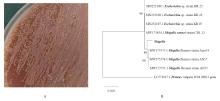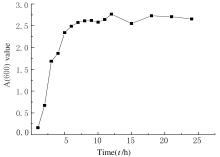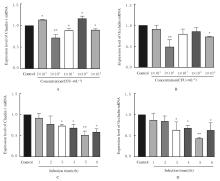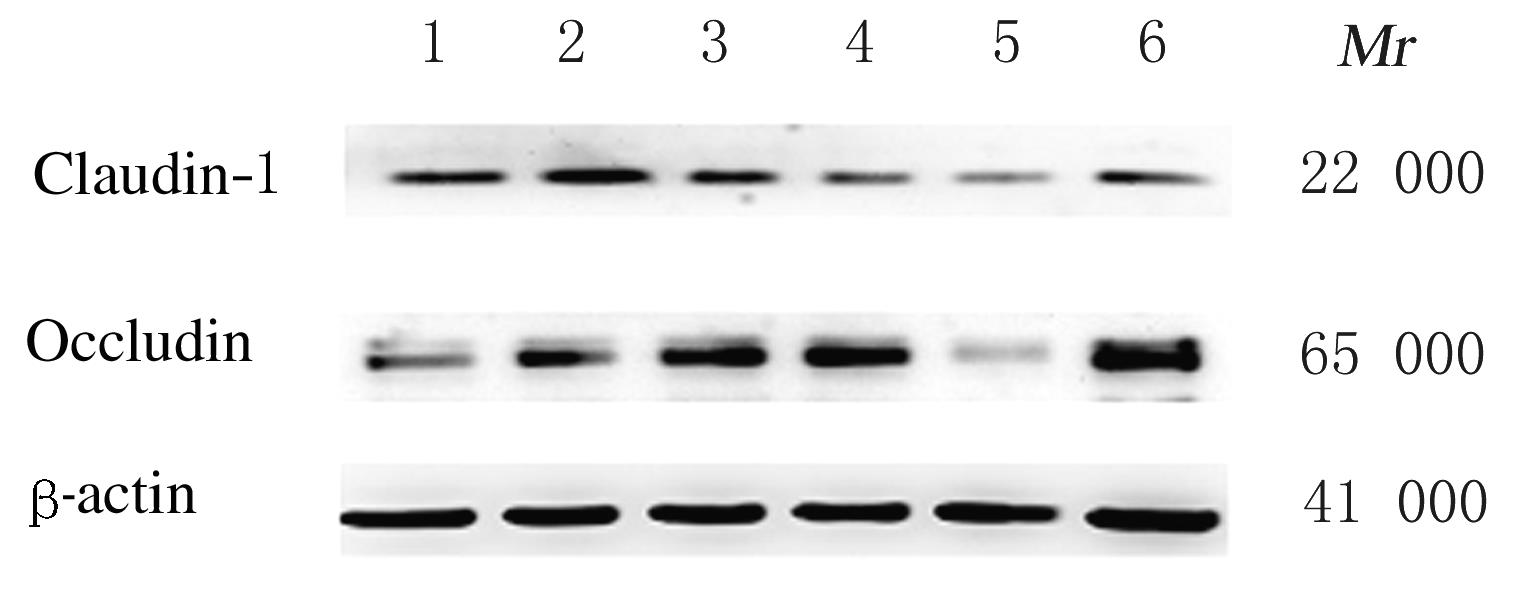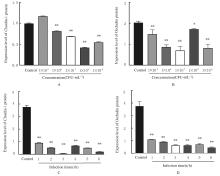| 1 |
胡兴义,张双翔,王开功,等.一株鸡源志贺杆菌的分离、鉴定及耐药性分析[J].中国家禽,2017,39(4):56-58.
|
| 2 |
王海燕,张文远.益生菌对肠黏膜屏障紧密连接蛋白保护作用的研究进展[J].国际消化病杂志,2012,32(5):284-286.
|
| 3 |
张博荀. 基于“肠道菌群-黏膜屏障”研究“黄芩-黄连”药对治疗T2DM的疗效机制及配伍效应[D].成都:成都中医药大学,2020.
|
| 4 |
魏 萌, 蒋红利, 史珂慧, 等. 益生菌改善尿毒症大鼠肠道氧化应激反应保护肠道屏障功能的研究 [J]. 临床肾脏病杂志, 2020, 20(7): 573-8.
|
| 5 |
KESSLER S P, OBERY D R, NICKERSON K P,et al. Multifunctional role of 35 kilodalton hyaluronan in promoting defense of the intestinal epithelium[J]. J Histochem Cytochem, 2018, 66(4): 273-287.
|
| 6 |
方 晶,薛博瑜,方南元.肠道细菌与肠黏膜机械屏障损伤关系的研究进展[J].东南大学学报(医学版),2018,37(2):330-334.
|
| 7 |
AHMAD U D, ADIL H, YUAN Z, et al. Inhibitory effect of Bifidobacterium bifidum ATCC 29521 on colitis and its mechanism[J].J Nutr Biochem,2020,79:108353.
|
| 8 |
刘 磊,曾 东,潘康成,等.益生菌调控肠道闭锁蛋白表达的机制[J].动物营养学报,2020,32(4):1526-1535.
|
| 9 |
LIU H, HOU C, WANG G, et al. Lactobacillus reuteri I5007 modulates intestinal host defense peptide expression in the model of IPEC-J2 cells and neonatal piglets[J]. Nutrients, 2017,9(6):559.
|
| 10 |
邢爽, 冯京海. 乳酸杆菌对肠道上皮紧密连接蛋白的调控 [J]. 动物营养学报, 2019, 31(4): 77-83.
|
| 11 |
张汉运,高 杰,何肖龙,等.鼠李糖乳杆菌效应蛋白HM0539增强小鼠对大肠杆菌O157:H7肠道感染的抵抗力[J].南方医科大学学报,2020,40(2):211-218.
|
| 12 |
YU Q, WANG Z, YANG Q. Lactobacillus amylophilus D14 protects tight junction from enteropathogenic bacteria damage in Caco-2 cells [J]. J Dairy Sci, 2012, 95(10): 5580-5587.
|
| 13 |
JOHNSON-HENRY K C, DONATO K A, SHEN-TU G, et al. Lactobacillus rhamnosus strain GG prevents enterohemorrhagic Escherichia coli O157:H7-induced changes in epithelial barrier function [J]. Infect Immun, 2008, 76(4): 1340-1348.
|
| 14 |
ALLERT S, FÖRSTER T M, SVENSSON C M,et al. Candida albicans-induced epithelial damage mediates translocation through intestinal barriers[J].mBio,2018,9(3):e00915-e00918.
|
| 15 |
OTSUBO R, MIMURO H, ASHIDA H, et al. Shigella effector IpaH4.5 targets 19S regulatory particle subunit RPN13 in the 26S proteasome to dampen cytotoxic T lymphocyte activation [J]. Cell Microbiol, 2019, 21(3): e12974.
|
| 16 |
LABREC E H, SCHNEIDER H, MAGNANI T J,et al. Epithelial cell penetration as an essential step in the pathogenesis of bacillary dysentery[J]. J Bacteriol,1964,88(5):1503-1518.
|
| 17 |
刘倚帆,谭秀文,游 伟,等.肉用杂交犊牛小肠上皮细胞的分离培养和鉴定[J].动物营养学报,2019,31(5):2278-2286.
|
| 18 |
ALAMDARY S Z, BAKHSHI B, SOUDI S. The anti-apoptotic and anti-inflammatory effect of Lactobacillus acidophilus on Shigella sonnei and Vibrio cholerae interaction with intestinal epithelial cells: A comparison between invasive and non-invasive bacteria[J].PLoS One,2018,13(6):e0196941.
|
| 19 |
FERNANDEZ-DUARTE K P, OLAYA-GALÁN N N, SALAS-CÁRDENAS S P, et al. Bifidobacterium adolescentis (DSM 20083) and Lactobacillus casei (Lafti L26-DSL): Probiotics able to block the in vitro adherence of rotavirus in MA104 cells [J]. Probiotics Antimicrob Proteins, 2018, 10(1): 56-63.
|
| 20 |
SHI Z, ZOU J, ZHANG Z, et al. Segmented filamentous bacteria prevent and cure rotavirus infection [J]. Cell, 2019, 179(3): 644-658.e13.
|
| 21 |
KIM A H, HOGARTY M P, HARRIS V C, et al. The complex interactions between rotavirus and the gut microbiota [J]. Front Cell Infect Microbiol, 2020, 10:586751.
|
 )
)
